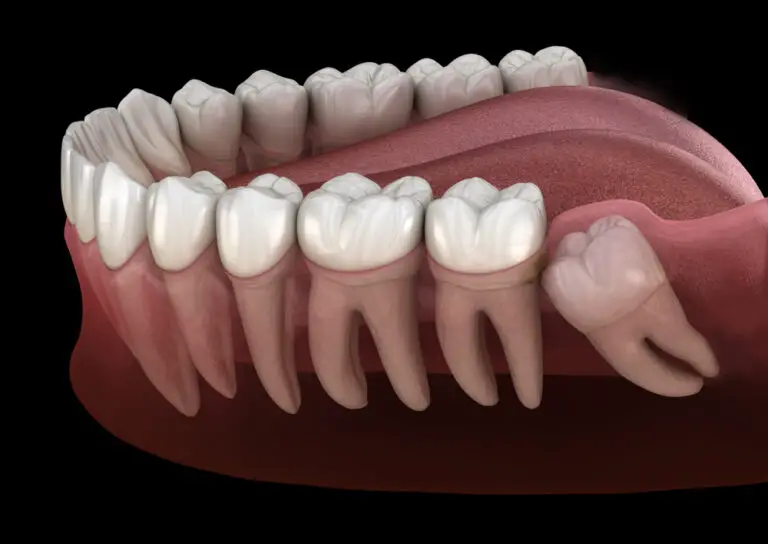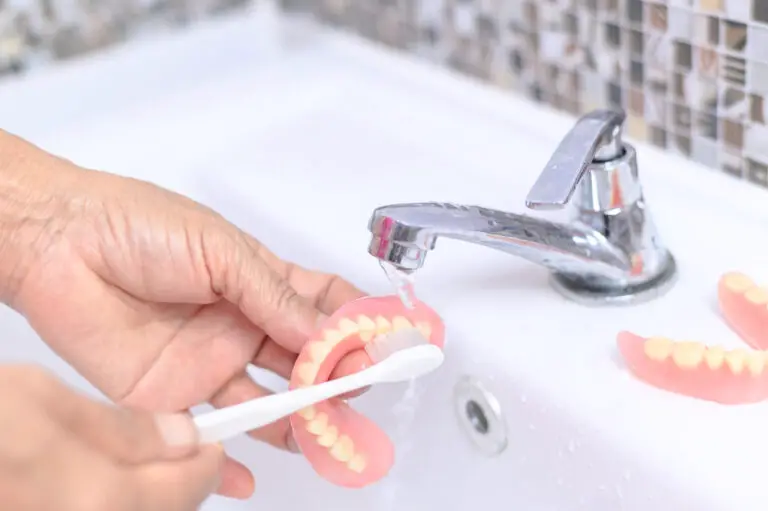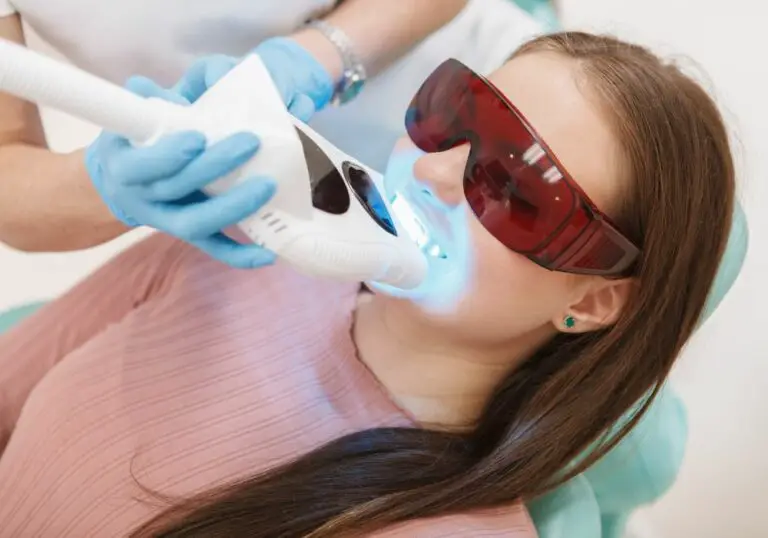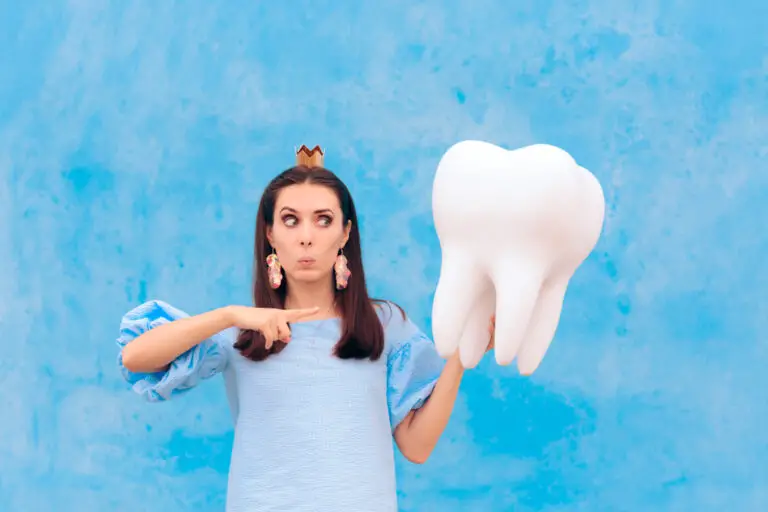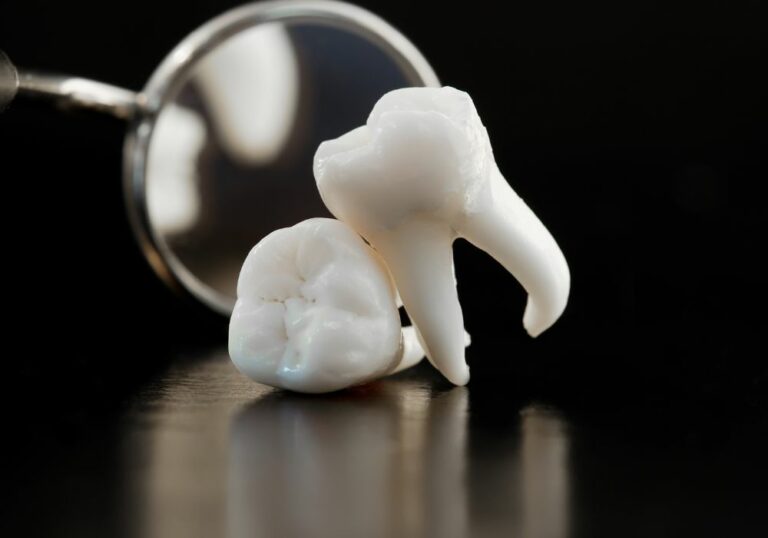Tooth gems are decorative jewels or crystals that are temporarily adhered to the surface of your teeth. These sparkling accessories can add flair to your smile for special occasions or everyday wear. However, some people find that their tooth gems fall off or deteriorate more quickly than expected. There are several potential reasons why your tooth gems may not be lasting as long as you hoped.
Improper Application
One of the most common reasons tooth gems don’t last is that they were not applied properly. While it may seem simple to just stick them on, there is actually an art to applying tooth gems correctly so they adhere securely. Proper application involves cleaning and preparing the tooth surface, applying the right amount of adhesive gel, and gently pressing the gem in place. Rushing or skipping any steps can lead to premature falling out.
Thorough Cleaning is Crucial
The first vital step is thoroughly cleaning and drying the tooth surface before attempting to apply gems. Food particles, plaque, oils, lotions, and any debris on the teeth will interfere with proper bonding of the gems. It is critical to take the time to brush, floss, and rinse away all contaminants. Be sure to scrub not just the front surfaces, but also plaque hiding in the crevices between teeth or underneath the gumlines. Any residue left behind will impede the adhesive gel from sticking.
Next, thoroughly dry the area using a tissue, cotton round, or clean cloth. Do not skip this step! Any moisture left on the tooth will dilute the adhesive gel once applied. Even small amounts of saliva or water prevent the temporary gems from bonding tightly. Taking a minute to carefully blot and air dry the prepared teeth makes a significant difference.
Adhesive Gel Must be Applied Properly
After diligent cleaning and drying, a small amount of adhesive gel specifically designed for tooth gems should be applied directly onto the surface of the prepared tooth. Following the product instructions precisely, place just a tiny drop or thin film of gel where the gem will be positioned. Too much adhesive can result in overflow or oozing once the gem is placed, which reduces retention power. Conversely, skimping on the gel amount leads to weak bonding. Strike the right balance with a modest amount spread into a thin, even layer.
Selecting the right adhesive gel product is also paramount. Use only the type of gel recommended by the manufacturer of your specific tooth gems for optimal results. The chemicals in the gel formula impact bonding strength. Generic glue or DIY adhesives are likely to fail prematurely. Purchase and use the correct adhesive gel for the gems you choose.
Gem Positioning Takes a Light Touch
Once adhesive gel has been applied, the actual gem placement takes a gentle touch. Carefully pick up the gem with tweezers or a tool and hover it precisely over the prepared tooth surface. Do not let it slide into place or the adhesive gel will be pushed to the sides, again impairing bonding strength. Instead, lightly place the gem straight down into the center of the gel puddle without shifting its position at all.
After initial placement, hold firm pressure on the gem for 30-60 seconds as the adhesive starts to set. Some kits come with a tool designed to apply this steady downward pressure as the gem adheres. This brief bonding time allows the gel to secure the gem properly. Be careful not to wiggle the gem or lift it to check adhesion during this phase, as it will disrupt the curing process.
Following all application steps in the proper order with care and precision results in the strongest, longest-lasting bond for temporary tooth gems. Rushing, skipping around, or taking shortcuts often backfires with gems falling out prematurely.
Poor Oral Hygiene Shortens Tooth Gem Duration
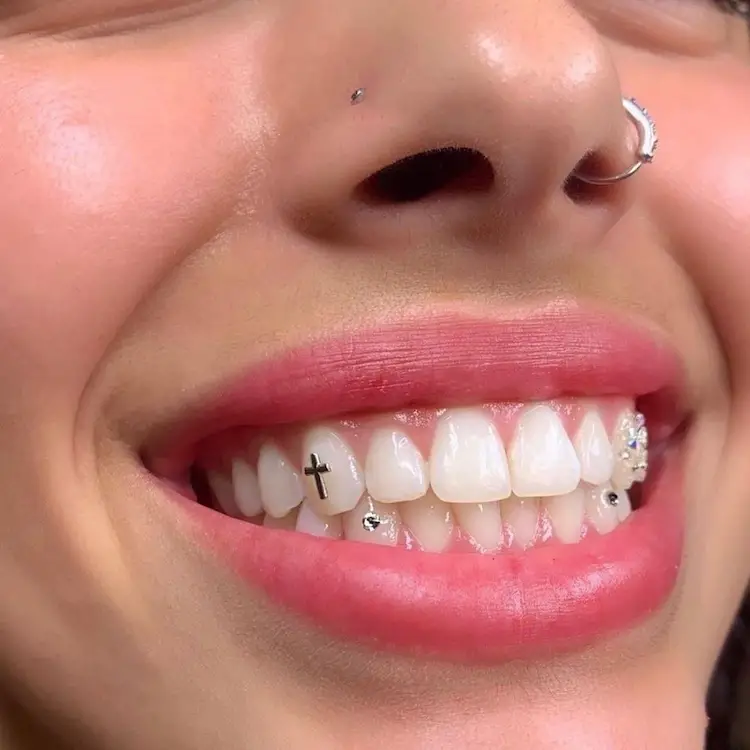
Proper oral hygiene is also key for keeping tooth gems firmly in place once applied. Food and plaque build-up around the gems can loosen or dislodge them, as well as lead to tooth decay. Maintain your normal daily hygiene regimen, taking special care to gently brush and floss around the gems without disturbing them. Soft bristled toothbrushes and waxed floss reduce chances of accidentally pulling off gems.
Avoid tooth-staining foods and beverages like coffee, tea, wine, and berries. Not only can they discolor gems, but the pigments also seep underneath, weakening the bond. Minimize consumption of hard, crunchy, chewy, and sticky foods that could help lever off gems when biting or chewing. Opt for softer foods instead while wearing gems.
See your dentist as scheduled for professional cleanings as well. Let them know you have temporary gems on your teeth so they can take extra precaution. Ultrasonic scaler tips and polishing instruments must be used judiciously to prevent excessive gem vibration. Regular dental visits keep your overall oral health in check while wearing gems.
Jewel Quality Impacts Durability
The materials and quality of the actual tooth gems also affect how securely they adhere and withstand wear. Higher prices typically indicate superior materials and sturdier construction. Splurge for gems made with cubic zirconia, Swarovski crystals, or similarly durable components. Opt for pre-made gems with pre-applied gel backings rather than trying to DIY lesser quality parts.
Beware of cheap gems made with weak adhesive or substandard crystals prone to dulling, cracking, and debonding. Pay attention to product reviews and descriptions to determine if the gems you select will have the strength to last or end up damaged after minimal wear. Consider spending a little more upfront to avoid having gems fall out constantly or look shabby after just a few applications.
Pre-made gems purchased from reputable beauty supply retailers provide the best results. Trying to cut costs by ordering questionable products online often backfires. Be a savvy consumer and only buy high-quality tooth gems from trusted vendors.
Tooth and Oral Factors
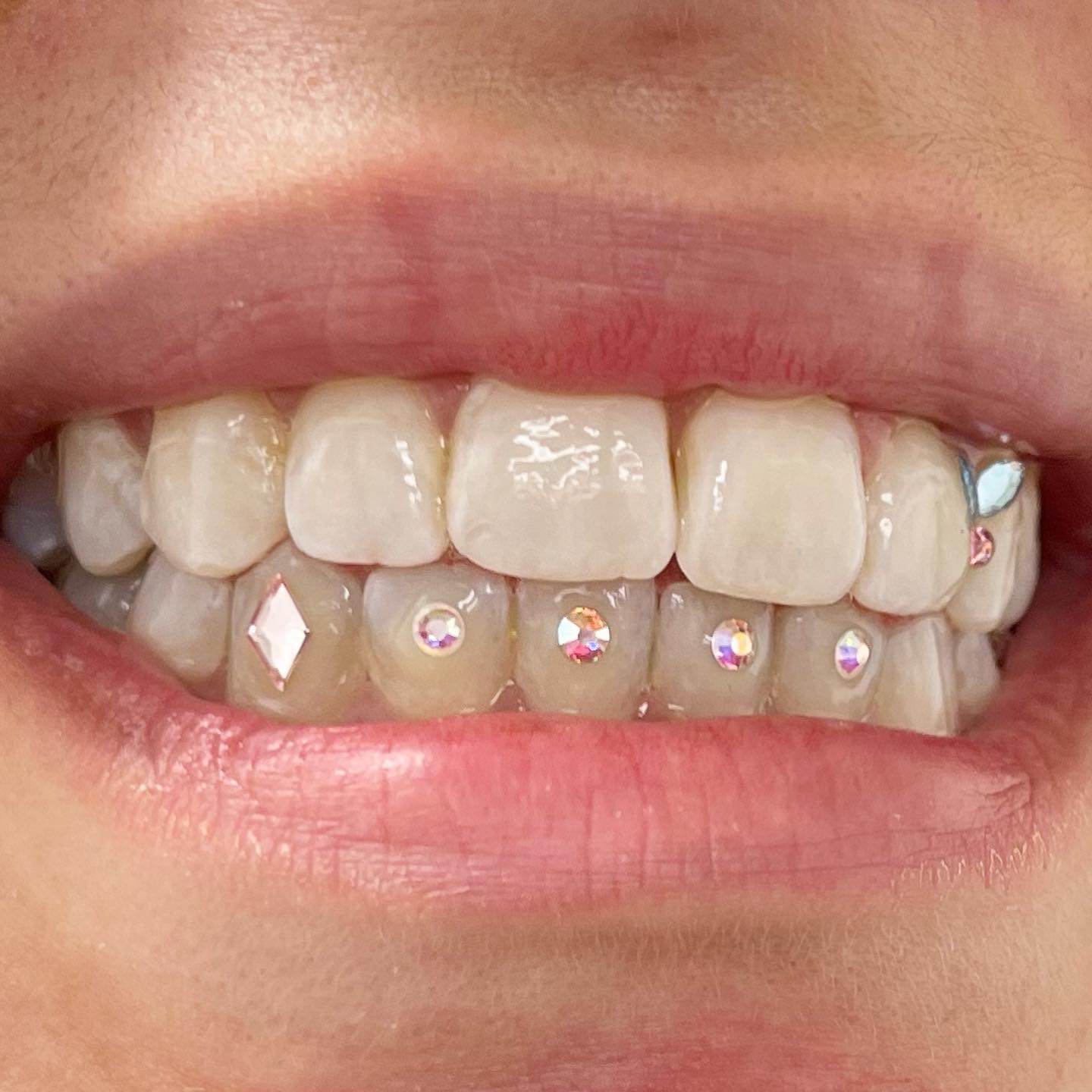
Variables related to the natural state of your teeth and mouth can also impact retention time for tooth gems. Teeth with roughness, cracks, irregular surfaces, or odd angles often do not hold gems as long as smoother tooth enamel. Chips, divots, stains, and old composites or sealants are examples of surface defects that impede bonding.
The overall positioning and spacing of your teeth affects results as well. Gems struggle to adhere between tight or crooked teeth with little space between. They tend to dislodge quicker on crowded or shifted teeth. Orthodontic devices like braces and retainers prevent gem attachment altogether in most cases.
Even the shape of your tooth roots close to the gums influences retention. Those with shallow roots or thin gum tissue are prone to gems falling out faster. There are fewer options for reliable placement on these teeth. Consulting your dentist helps determine if tooth gems are advisable based on the unique characteristics of your smile.
Habits and Activity Cause Early Loss
Certain habits and activities raise the risk of gems dislodging prematurely. Vigorous flossing disturbing the edges, excessive teeth grinding at night, and oral habits like nail biting or chewing on pens all loosen gems. Crunching down on hard candies, nuts, or ice is also asking for trouble.
Drinking hot coffee or soup brings temporary expansion that can loosen gems mid-meal. Swishing vigorous mouthwash applies forceful pressure on the gems. Smoking cigarettes or vaping subjects the gems to heat that degrades the bonding adhesive gel.
Even wide beaming smiles, laughter, and animated talking apply stresses on the gems, especially around the corners of the mouth. Anything that generates excessive mouth movements or pressure on the teeth tends to shorten retention time. Being cognizant and minimizing these behaviors helps the gems last their maximum duration.
Gems Are Temporary By Design
Lastly, it’s essential to remember tooth gems are only intended to be worn temporarily. The adhesive gel securing them is not formulated for permanent, lifelong bonding. Dentists recommend replacing gems about every 1-2 weeks on average. Wearing them any longer than that often results in increased risk of damage or loss as the adhesive bond naturally weakens over time.
Tooth gems are decorative accessories for occasional wear, not secured like permanent dental crowns or veneers. Attempting to make them last indefinitely is unrealistic. The adhesive gel will eventually dissolve, requiring reapplication. So don’t be disappointed when beautifully placed gems fail to stay fabulously in place for months or years of constant wear. Enjoy them as short-term dazzle for special events and be prepared to reapply as directed.
Tips for Making Tooth Gems Last Longer
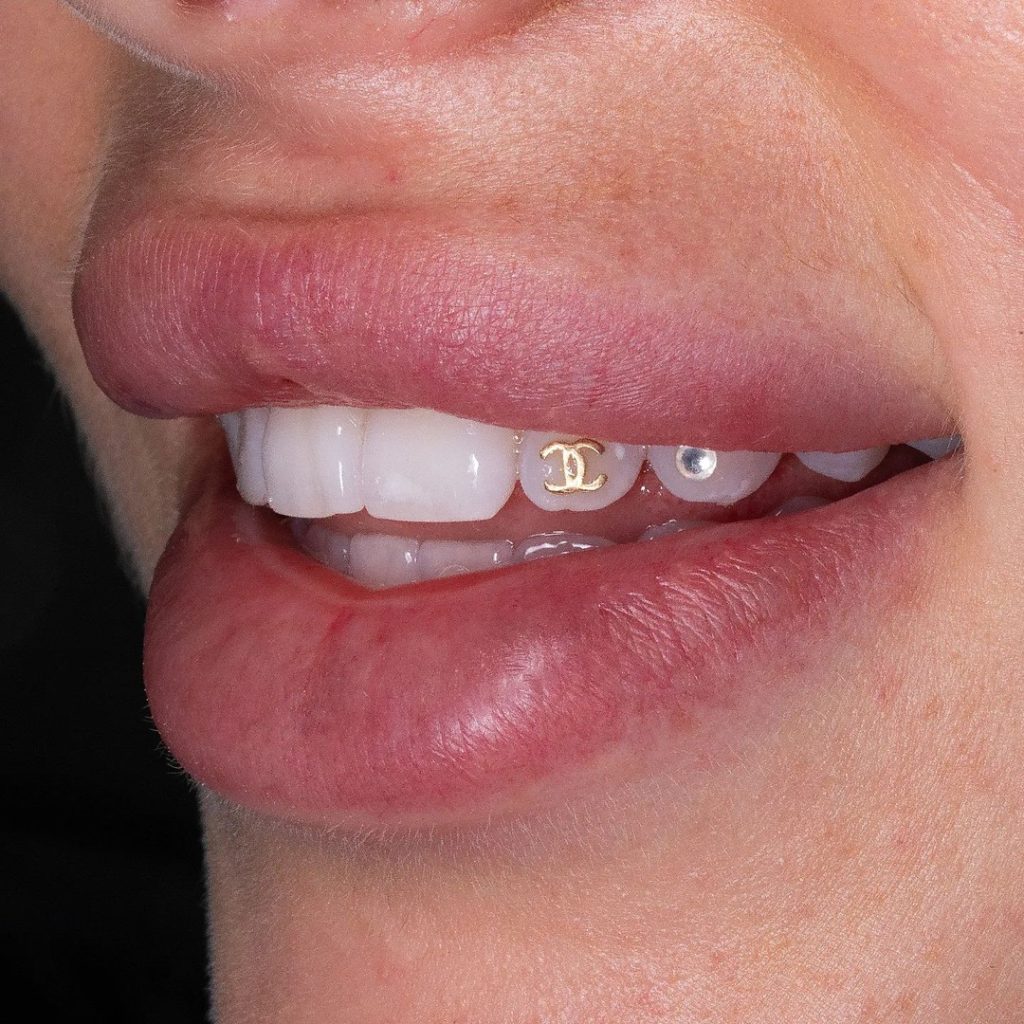
If you want your fancy tooth gems to stay securely adhered and fabulous for as long as possible within their intended duration, follow these pro tips:
- Clean teeth thoroughly with brushing, flossing, mouthwash before application. Remove every trace of debris.
- Dry the tooth surface completely with tissues or cotton rounds before applying adhesive gel.
- Closely follow instructions for adhesive gel amount and application method for that specific product. Don’t take shortcuts.
- Place gems gently straight down without sliding into position. Don’t wiggle or remove gem during the 30-60 second adhesive bonding phase.
- Maintain excellent oral hygiene while wearing gems. Brush and floss very gently around them. See your dentist for cleanings.
- Avoid biting nails, chewing gum, grinding teeth at night, smoking, or other habits that put pressure on the gems.
- Stick to a soft diet without crunchy, sticky, hard foods and minimize temperature extremes.
- Select high quality gems made with durable materials like cubic zirconia or Swarovski crystals.
- Consider dental treatment for any significant tooth defects or irregularities that prevent ideal bonding.
- Plan to replace gems every 1-2 weeks. Don’t try to make them last forever with constant wear.
Taking proper care both during application and while wearing tooth gems will maximize their dazzling lifespan. But recognize their temporary nature and avoid damaging your teeth trying to make them permanent. With reasonable expectations and TLC, you can safely enjoy gorgeous gems for special occasions.
Frequently Asked Questions About Tooth Gems
How long should I expect tooth gems to last?
With ideal application and care, tooth gems typically last 1-2 weeks at a time. The adhesive gel is temporary and will dissolve over time. For longest duration, replace gems after 14 days.
Can I sleep with tooth gems on overnight?
It’s best to remove tooth gems before bed to avoid potential damage from grinding teeth during sleep. The consistent pressure can work gems loose.
Will tooth gems hurt my teeth?
When applied correctly using proper adhesive gel and methods, tooth gems will not damage or hurt your teeth. Follow instructions closely and discontinue use if you experience any pain, sensitivity or dental issues.
What’s the best way to clean my teeth with gems attached?
Gently brush and floss around gems daily, being careful not to dislodge them with forceful motions. Use soft bristles and waxed floss. Avoid ultrasonic cleaners and abrasive whitening products while wearing gems.
Can I get tooth gems on dental crowns or veneers?
It’s not recommended as the adhesives may not bond as effectively and gems could damage those tooth restorations. Consider other smile-enhancing options that pose less risk to expensive dental work.
What is the minimum age for tooth gems?
Most dentists suggest waiting until at least age 13 for tooth gems since younger children lack the oral hygiene skills to prevent swallowing or improperly removing gems. Parents should oversee use and teach kids how to apply/remove gems safely.
How do I take off tooth gems correctly?
Don’t forcefully pull gems off or you may damage tooth enamel. Carefully loosen the edge with floss and rinse with water. Remaining adhesive will dissolve within a week. Avoid aggressive scraping or picking.
Can I reuse tooth gems after removing them?
It’s not recommended to reuse tooth gems after removal since the adhesive backing degrades over time. New adhesive gel should be applied to fresh, clean gems for optimal bonding each application.
Conclusion
Tooth gems provide temporary sparkle and style for your smile when applied correctly and cared for properly. Follow application directions precisely, maintain excellent oral hygiene, choose high quality gems, and avoid damaging habits while wearing them. With reasonable expectations for longevity and pro tips for maximizing their duration, you can safely enhance your smile with dazzling tooth gems.

